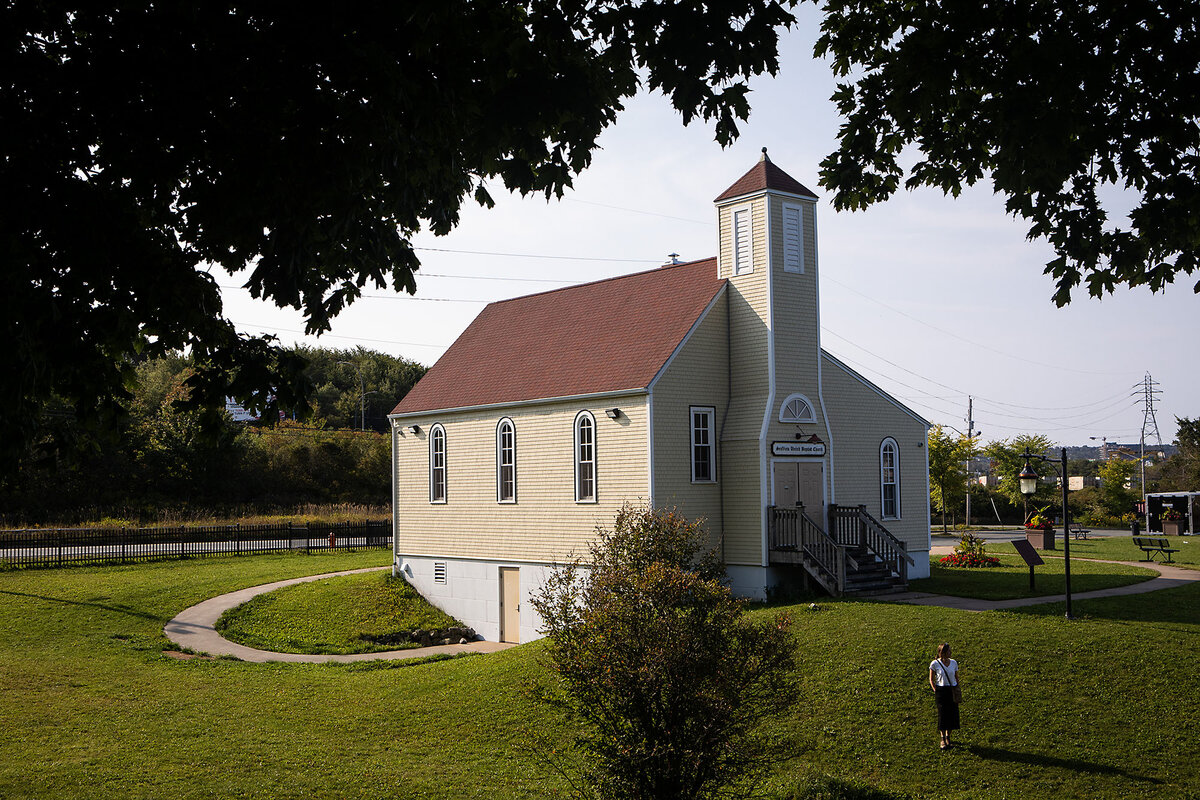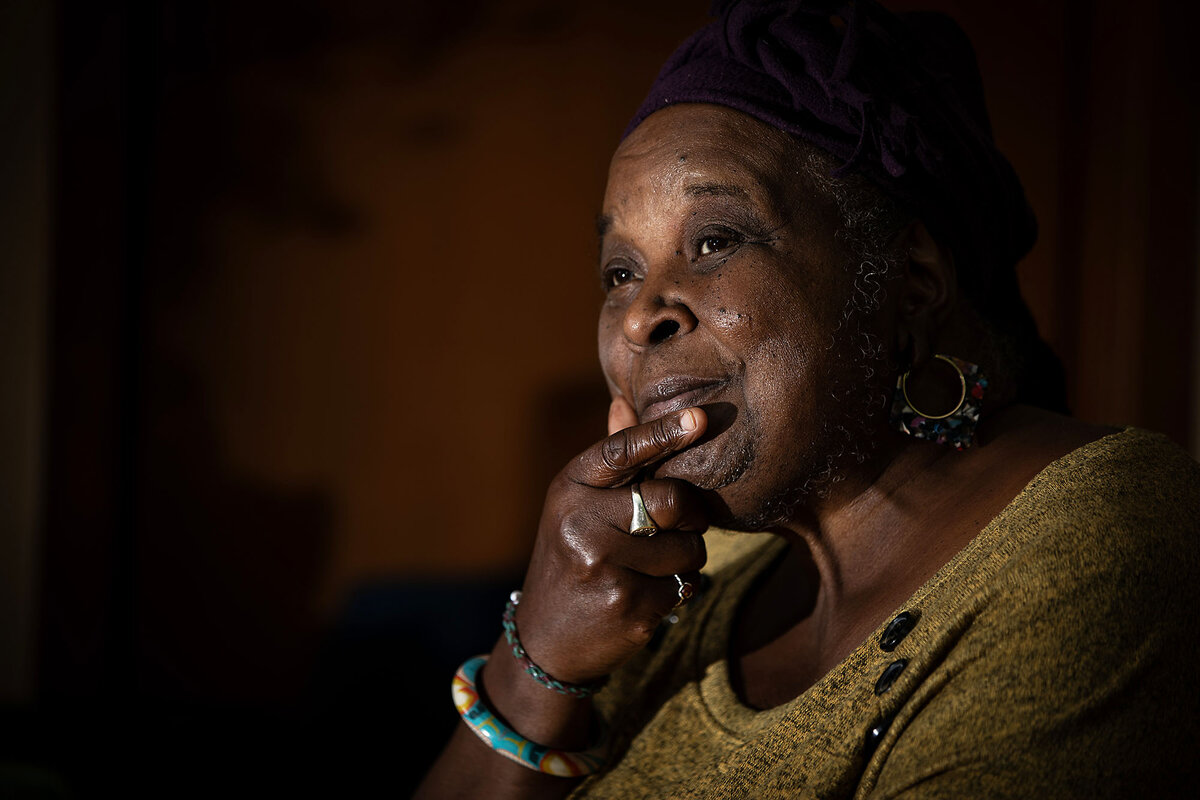Can Nova Scotia, home of Canada’s Black culture, save its Black communities?
Loading...
| Upper Hammonds Plains, Nova Scotia
When Curtis Whiley’s great-great-great-grandfather, a cooper from Virginia, took refuge in Nova Scotia in 1815, this community was nothing but pine forest.
Settled far from amenities, he and the many freed slaves from the Chesapeake area opened up lumber mills and barrel shops and turned Upper Hammonds Plains into one of Nova Scotia’s 52 historic Black communities, and Nova Scotia into the birthplace of Canadian Black culture. This town produced Canada’s first all-Black volunteer fire station.
Today, as Mr. Whiley drives around his childhood neighborhood, the construction of multiunit condos rumbles on. Hundreds of new residents have moved in – amid gentrification, rising rents in nearby Halifax, and record low-vacancy rates across the Maritime Province – and the descendants of the original settlers own just 38% of the land.
Why We Wrote This
Canada’s Black community has a long history in Nova Scotia, dating back to its earliest days as a French colony. Now, the community is trying to ensure that it isn’t washed away amid gentrification and economic shifts.
Mr. Whiley is fighting to make sure this historic community doesn’t become just any commuter suburb – using a radical rethink of both land and property. He’s the founder of the Upper Hammonds Plains Community Land Trust, a property model with roots in the American civil rights era, but which has grown in force across Canada amid a protracted housing crisis.
“We have such a sense of rootedness here,” he says, pulling up to the plot where they’ve proposed 136 affordable units. “So we need to try to protect and preserve our heritage while managing all this growth that’s happening.”
Community land trusts all look different but converge in the singular idea that it’s the community itself, not just an individual owner, that benefits. The trust acquires land, promising never to sell it, and offers community benefits like affordable housing in perpetuity. Individual families don’t accumulate as much wealth as they might in the real estate market. Instead, proceeds are reinvested back into the community.
The Canadian Network of Community Land Trusts counts more than 40 initiatives across the country, most begun in the past decade. Of those, seven specifically serve Black Canadians, five of which are in Nova Scotia.
Nova Scotia’s Black population is the oldest in the country, tracing back four centuries since the arrival of French colonists in the 1600s. Significant settlement followed in distinct waves: Black loyalists fleeing to the British Empire after the American Revolution; Jamaican Maroons, or former slaves, who resettled here; and refugees who fought in the War of 1812 for promises of freedom and land.
The Black newcomers escaped enslavement, but were met with racism across Nova Scotia. The small community of Africville, on the Bedford Basin in Halifax, was demolished by the city in the 1960s. Today there remains only a replica of the Seaview United Baptist Church, once the center of the neighborhood in the 1800s, which serves as a small museum. “Most [of the 52 communities] exist only in terms of historic name now,” says Isaac Saney, a Black studies professor at Dalhousie University in Halifax.
That dispossession continues to impact the Black community’s ability to pass down wealth along generations. According to the African Nova Scotian Prosperity and Well-Being Index, the Black community lives in inadequate or unaffordable housing at twice the rate of the population overall.
Lynn Jones, who in 2023 was appointed to the Order of Canada, the country’s second-highest civilian honor of merit, has dedicated her life to fighting against racial inequities in a province considered the heart of Black activism. Her latest initiative is a Black community land trust called “Down the Marsh.”
It’s named after one of three historic Black communities in Truro, where she grew up. It was a tightly knit community then. Now, hardly any Black families live there, and she often feels like a stranger, she says.
In 2019, she was watching deer graze in the marsh when a police officer approached her car. He’d received a call from someone complaining about “suspicious” people in the neighborhood – which she took to be about her race. The incident spurred her to write a furious letter to the Truro mayor entitled “Watching deer while Black.”
“I can’t wait until the community comes and reclaims the land,” says Dr. Jones, sitting in her family home, which is located across from the plot where she plans to build the project.
That sense of reclamation is what drives Mr. Whiley, too. Many of those who arrived in Upper Hammonds Plains during the War of 1812 never received the land titles promised to them. City authorities appropriated their water source, Pockwock Lake, to provide water to Halifax residents but didn’t service Upper Hammonds Plains for two more decades.
“So many things have happened to us. And I think this model can be used to liberate Black people in particular who have been dispossessed of the land and marginalized in ways that still makes it hard to have ownership of things,” he says.
The land trust, formed two years ago, is not a bid to halt development or become a gated community, Mr. Whiley says. “We just want a say in the future.”








